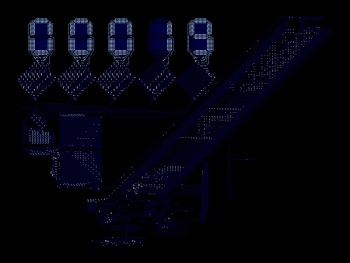Code: Select all
' Circuit:
'
' +---(L1)---+---(L2)---+
' | | |
' | | |
' (Us) (C1) (R1)
' | | |
' | | |
' +----------+----------+
'
' Inductor: U = L * dI / dt or dI = U * dt / L
'
' Capacitor: I = C * dU / dt or dU = I * dt / C
'
' Resistor: U = I * R
'known/set values
dim as double Us = 200 'V (power supply)
dim as double L1 = 320 * 1e-6 'H
dim as double L2 = 100 * 1e-6 'H
dim as double C1 = 10 * 1e-6 'F
dim as double R1 = 1.0 'Ohm
'to be calculated / intermediate values
dim as double U_L1, U_C1, U_L2, U_R1 'V
dim as double I_L1, I_C1, I_L2, I_R1 'A
dim as double dU_L1, dU_C1, dU_L2, dU_R1 'U
dim as double dI_L1, dI_C1, dI_L2, dI_R1 'A
'simulation time settings
dim as double t = 0, tEnd = 2e-3 's
dim as double dt = (tEnd - t) / 10000 's
const W = 800, H = 600
screenres W, H, 32
width W \ 8, H \ 16
'iterate over time
while t < tEnd
'step 1, determine I_L1
U_L1 = Us - U_C1
dI_L1 = U_L1 * dt / L1
I_L1 += dI_L1
'step 2, determine U_C1
I_C1 = I_L1 - I_L2
dU_C1 = I_C1 * dt / C1
U_C1 += dU_C1
'step 3, determine U_R1
I_R1 = I_L2
U_R1 = I_R1 * R1
'step 4, determine I_L2
U_L2 = U_C1 - U_R1
dI_L2 = U_L2 * dt / L2
I_L2 += dI_L2
'plot at top: Voltages
pset((t / tEnd) * (W - 20) + 10, H * 0.4 - Us), rgb(0, 0, 255)
pset((t / tEnd) * (W - 20) + 10, H * 0.4 - U_C1), rgb(0, 255, 0)
pset((t / tEnd) * (W - 20) + 10, H * 0.4 - U_R1), rgb(255, 0, 0)
'plot at bottom: Currents
pset((t / tEnd) * (W - 20) + 10, H * 0.9 - I_L1), rgb(0, 0, 255)
pset((t / tEnd) * (W - 20) + 10, H * 0.9 - I_C1), rgb(0, 255, 0)
pset((t / tEnd) * (W - 20) + 10, H * 0.9 - I_L2), rgb(255, 0, 0)
'update time
t += dt
wend
'display what is what
draw string (10, 10), "Us (blue), U_C1 (green), U_R1 (red)"
draw string (10, H - 30), "I_L1 (blue), I_C1 (green), I_L2 (red)"
'show I_R1 end value
draw string (W \ 2, H \ 2), "I_R1 [A] = " + str(I_R1)
'wait until key press
while inkey = "" : wend

